Cracking the Code of the Cygnus Constellation: A Guide to the Northern Cross – a celestial puzzle that has captivated stargazers and scientists for centuries. Nestled within the expansive night sky, the Cygnus constellation, also known as the Northern Cross, beckons us with its enigmatic allure. In this comprehensive guide, we will journey through the constellation’s origins, delve into its mythological significance, explore the formation of the Northern Cross, uncover its alignment with ancient sites, and unravel the mysteries surrounding its exoplanets. Prepare to embark on a cosmic adventure as we decode the secrets of the Cygnus constellation and unlock the hidden messages of the Northern Cross.
Contents
- The Cygnus Constellation: A Brief Overview
- The Northern Cross: A Stellar Configuration
- Mysterious Alignment with Ancient Sites
- Cygnus and its Exoplanets
- Cosmic Mysteries: Unraveling the Cygnus Enigma
- Conclusion
-
Frequently Asked Questions
- 1. What is the best time to observe the Cygnus constellation?
- 2. How many stars are there in the Cygnus constellation?
- 3. Are there any famous deep-sky objects within the Cygnus constellation?
- 4. How far is the Cygnus constellation from Earth?
- 5. Is there any connection between Cygnus and the mythological story of Orpheus?
- 6. What is the significance of Deneb, the brightest star in Cygnus?
- 7. Are there any known exoplanets within the Cygnus constellation?
- 8. Does the Cygnus constellation play a role in any ancient cultures or mythologies?
- 9. Can the Cygnus constellation be observed from both the Northern and Southern Hemispheres?
- 10. Are there any upcoming missions or projects focused on studying the Cygnus constellation?
- References
-
Frequently Asked Questions
- FAQs about the Cygnus Constellation
- Curious about the Cygnus Constellation? Here are some frequently asked questions about this celestial wonder:
- 1. What is the significance of the Northern Cross?
- 2. How was the Cygnus Constellation formed?
- 3. What is the mythological significance of Cygnus?
- 4. How did ancient civilizations recognize the alignment of Cygnus with their structures?
- 5. Are there hidden cosmic messages within the Cygnus Constellation?
- 6. How do astronomers discover exoplanets in the Cygnus Constellation?
- 7. How significant is the discovery of exoplanets in Cygnus?
- 8. What role does Cygnus play in the study of dark matter?
- 9. How are black holes related to the Cygnus Constellation?
- 10. What can we conclude about the Cygnus Constellation?
- References
- Read More
The Cygnus Constellation: A Brief Overview
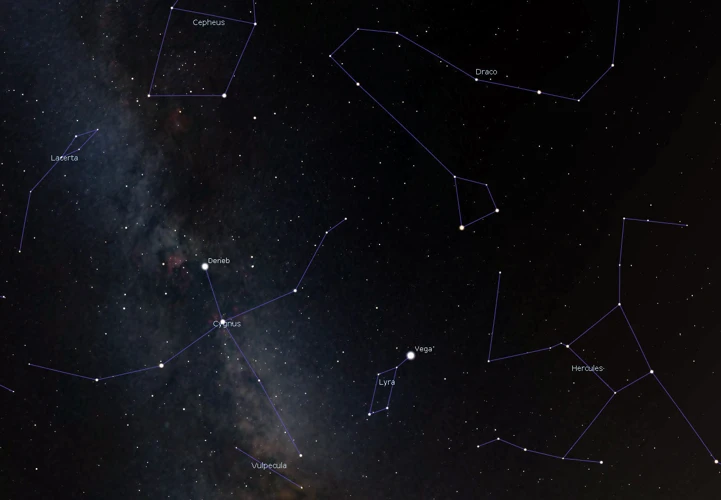
The Cygnus constellation, also known as the Northern Cross, is a prominent feature in the night sky, captivating both astronomers and mythology enthusiasts alike. Located in the northern hemisphere, Cygnus is one of the most recognizable constellations with its distinct cross-shaped pattern. It is composed of several bright stars, including the famous Deneb, which marks the tail of the celestial swan. The constellation derives its name from the Latin word for swan. While the formation of constellations is a result of human imagination, Cygnus holds significance beyond its stellar beauty. In various cultures, it is associated with mythological stories and legends. One such tale links Cygnus to the tale of Zeus and Leda, where Zeus transformed into a swan to seduce Leda, resulting in the birth of the famous twins Castor and Pollux. The Cygnus constellation has also played a role in ancient navigational practices, aiding mariners in their journeys across the seas. Today, it continues to mesmerize astronomers, who study its stars and search for exoplanets within its domain. As we delve deeper into the mysteries of Cygnus, we will uncover its hidden connections to ancient sites, its cosmic significance, and its role in unraveling the enigma of our universe. Cygnus constellation never ceases to amaze, inviting us to embark on a mystical journey through the cosmos.
1.1 Constellation Formation
The formation of constellations, including the Cygnus constellation, is a fascinating process that combines human imagination with the arrangement of stars in the night sky. Constellations are a way for astronomers and storytellers to organize and navigate the vastness of space. They are composed of groups of stars that appear to form recognizable patterns when viewed from Earth. These patterns vary across different cultures and civilizations. The Cygnus constellation, for example, is shaped like a cross with the star Deneb at its tail. The patterns we perceive are largely subjective, as different cultures and civilizations have their own interpretations and names for the stars within constellations. Over the centuries, astronomers have used constellations as a framework for identifying and studying celestial objects. The formation of constellations has both practical and cultural significance, providing a way for us to navigate the night sky and to tell stories about the universe. Through the formation of constellations, we are able to connect with the cosmos on a deeper level and gain a greater appreciation for the wonders of the universe. Constellation formation is a testament to humanity’s innate curiosity and our desire to make sense of the celestial realm.
1.2 Mythological Significance
Mythological Significance
Within the vast tapestry of human myths and legends, the Cygnus constellation holds a special place. Across different cultures and civilizations, it has been associated with various captivating stories and characters. In Greek mythology, Cygnus is linked to the tale of Orpheus, the legendary musician. According to the myth, when Orpheus was tragically killed by a group of women known as the Maenads, he was transformed into a swan and placed among the stars in the Cygnus constellation. This connection between music and the celestial realm highlights the deep reverence ancient cultures held for the night sky. Another fascinating mythological interpretation of Cygnus comes from Native American traditions. They see the shape of a celestial bird—an eagle or a hawk—rather than a swan. For the Native Americans, this constellation embodies spiritual significance, representing beings of power and wisdom. The diverse interpretations of the Cygnus constellation across cultures highlight its universal appeal and its profound impact on the human imagination. Through these mythological narratives, we can glimpse the awe and reverence our ancestors had for the constellations, as they sought to explain the mysteries of the cosmos. For further exploration on the origins of meteor showers, you can read our informative article “Unveiling the Origins of Meteor Showers”.
The Northern Cross: A Stellar Configuration
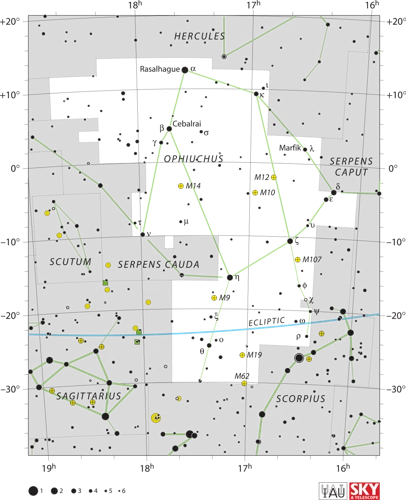
The Northern Cross, a stellar configuration within the Cygnus constellation, is a sight to behold in the night sky. Consisting of four main stars, it forms the shape of a cross, earning its name. At the top of the cross is the star Deneb, known for its brilliance and being one of the most luminous stars in the Milky Way galaxy. Moving downwards, the line of the cross is formed by the stars Sadr and Gienah. Sadr, located in the center, is a supergiant star that emits a vibrant white light. Gienah, on the other hand, is a blue giant star that adds a touch of celestial beauty to the cross. Finally, at the bottom of the cross, we find the star Alberio, comprising a binary star system. It consists of a bright yellow star and a fainter blue companion, creating a visually striking contrast. The Northern Cross, with its stellar arrangement, serves as a guidepost for stargazers, navigators, and astronomers alike. Its distinct shape and prominent stars make it a fascinating celestial feature, inviting us to ponder the wonders of the universe and our place within it. With a constellation as mesmerizing as the Northern Cross, it’s no wonder that people have found inspiration in its presence throughout history.
2.1 Stars of the Cygnus Constellation
The Cygnus constellation, also known as the Northern Cross, is home to a dazzling array of stars that contribute to its captivating beauty. One of the most prominent stars within Cygnus is Deneb, located at the tail of the celestial swan. Deneb is a luminous supergiant star, emitting a brilliance that rivals some of the brightest stars in the night sky. Its distance from Earth is estimated to be around 1,550 light-years. Another notable star within Cygnus is Albireo, which marks the head of the swan. Albireo is a binary star system, composed of a gold-hued primary star and a smaller blue-hued companion. The contrasting colors of these stars create a mesmerizing visual spectacle when observed through a telescope. Additionally, Sadr, located at the heart of the Northern Cross, is a supergiant star that shines with a radiance that captivates observers. These stars, along with others within the Cygnus constellation, paint a celestial masterpiece in the night sky, making it a favorite among stargazers and astronomers alike. Studying the properties and movements of these stars provides valuable insights into the nature of our universe and its vastness. Whether you’re an avid enthusiast or a curious observer, the stars of the Cygnus constellation are sure to leave you in awe of the wonders of the cosmos.
2.2 The Cross Formation
The cross formation of the Cygnus constellation, also known as the Northern Cross, is a captivating astronomical phenomenon. To the naked eye, the constellation appears as a giant cross stretching across the night sky. The vertical beam of the cross is formed by the three bright stars, Deneb, Sadr, and Gienah, while the horizontal beam is created by Albireo and Aljanah. This cross-shaped pattern is a result of the position and alignment of these stars in relation to our vantage point on Earth. The stars themselves are at varying distances from us, with Deneb, the brightest star in Cygnus, being over 1,500 light-years away. The cross formation of this constellation has fascinated countless generations, leading to various cultural interpretations and mythological associations. Some ancient civilizations believed that the cross represented the gateway between the mortal world and the celestial realm. Others tied it to tales of heroic figures or gods. Regardless of the interpretation, the Northern Cross continues to inspire wonder and curiosity as we contemplate the vastness of the universe and our place within it. Its striking shape serves as a reminder of the intricate and awe-inspiring beauty that exists beyond our Earthly boundaries.
Mysterious Alignment with Ancient Sites
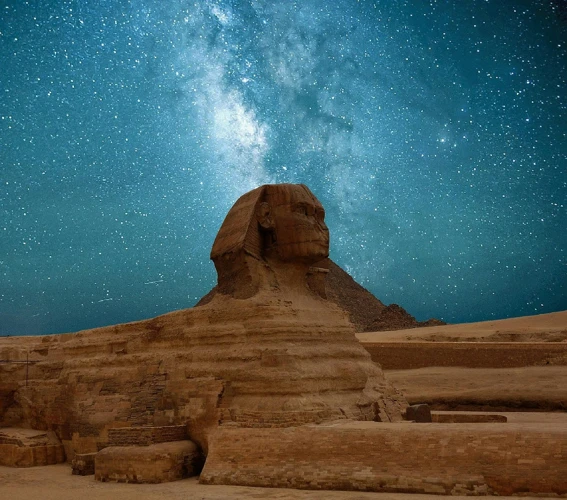
The alignment of the Cygnus constellation with ancient sites has long intrigued researchers and archaeoastronomers. Ancient civilizations, such as the Mayans and Egyptians, meticulously observed the night sky and incorporated celestial patterns into their architecture and religious practices. One of the most remarkable discoveries is the potential alignment of the Cygnus constellation with significant monuments and sacred sites. For example, the Deneb star, located at the head of the swan-shaped constellation, has been suggested to align with the Great Pyramids of Giza during certain astronomical events. This alignment raises tantalizing questions about the ancient Egyptians’ knowledge of celestial movements and their ability to incorporate them into their architectural designs. Similarly, researchers have identified potential alignments between Cygnus and other ancient sites worldwide, including Stonehenge, Teotihuacan, and Machu Picchu, to name a few. The significance of these alignments continues to be a subject of debate, with some speculating that they could be linked to spiritual practices, cosmological beliefs, or even serve as celestial calendars. While the exact purposes remain elusive, the mysterious alignment between the Cygnus constellation and ancient sites offers a tantalizing glimpse into the profound connection our ancestors felt with the cosmos and their ability to harness its power and symbolism. To fully grasp the magnitude of these alignments, archaeological investigations and ongoing research into ancient civilizations’ understanding of astronomy are crucial. By unraveling the secrets encoded within these alignments, we may gain valuable insights into the cultural and spiritual practices of our ancient predecessors and their reverence for the celestial realm. The deepened understanding of the mysterious alignment between Cygnus constellation and ancient sites holds a key to illuminating the intricate relationship between humanity and the cosmos throughout history.
3.1 Cygnus and Archaeoastronomy
Cygnus, the mesmerizing Northern Cross, has long fascinated archaeoastronomers, who study the celestial alignments of ancient structures and their cultural significance. The Cygnus constellation, with its prominent cross formation, appears to be intricately linked to various ancient sites around the world. One notable example is the alignment of the Giza pyramids in Egypt, which correspond to the stars of Cygnus, specifically the three belt stars. This alignment suggests a deep understanding of celestial movements and their integration into architectural designs. Additionally, there are archaeological findings that suggest the existence of a prehistoric stone circle near Stonehenge, known as the “Bluestonehenge,” which is oriented towards the midsummer sunrise and the setting point of the Cygnus constellation. These findings raise intriguing questions about the ancient civilizations’ knowledge of astronomical events and their utilization of the Cygnus constellation as a celestial compass. The significance of these connections between Cygnus and ancient sites remains a topic of ongoing research and speculation. As we delve further, we will uncover more cosmic enigmas surrounding this celestial wonder and its potential role in shaping the ancient world. Archaeoastronomy holds the key to unraveling the secrets that Cygnus has kept hidden for centuries, shedding light on the intricate relationship between the cosmos and human civilization.
The Cygnus constellation has long been a source of fascination, not only for its stunning celestial display but also for the possibility of hidden cosmic messages. Some theorists propose that ancient civilizations possessed advanced astronomical knowledge and encoded messages within the arrangement of stars in Cygnus. These alleged messages could range from navigational information for ancient mariners to clues about the origins of humanity itself. While skepticism exists surrounding these claims, there are undeniable connections between Cygnus and ancient sites. For example, the constellation’s alignment with certain archaeological sites, such as Stonehenge and the Great Pyramids of Giza, have led to speculations about its role in the construction of these historical landmarks. Additionally, there are intriguing correlations between planetary alignments during significant historical events, such as wars, and the position of Cygnus in the night sky. Could these be mere coincidences or evidence of a deeper cosmic influence on our world? While further research is needed to unravel these mysteries, the notion of hidden cosmic messages within the Cygnus constellation continues to fuel our curiosity and inspire further exploration into the depths of the universe. To learn more about the historical significance of planetary alignments during wars, read our related article here: Historical Significance of Planetary Alignments During Wars.
Cygnus and its Exoplanets
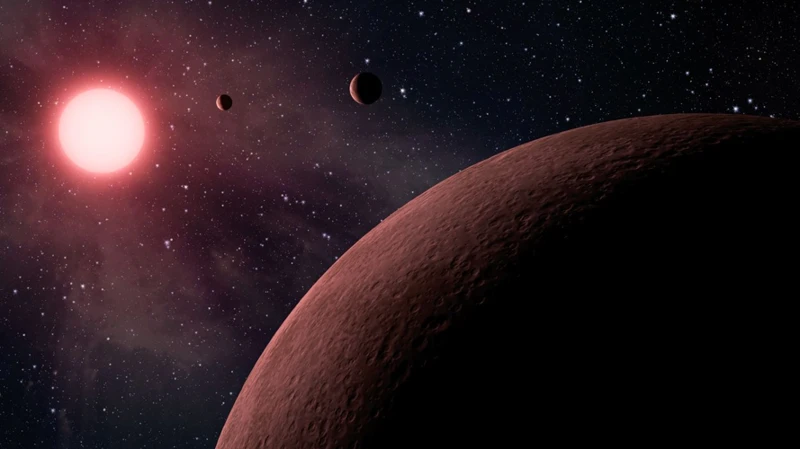
The Cygnus constellation not only enchants us with its stellar beauty but also reveals a captivating treasure trove of exoplanets within its bounds. Scientists have discovered a significant number of exoplanets orbiting the stars of Cygnus, opening doors to new possibilities and insights into the vastness of our universe. These exoplanets come in a variety of sizes, compositions, and distances from their host stars. Some may resemble Earth, while others may be gas giants like Jupiter. One intriguing exoplanet in Cygnus is Kepler-452b, which has been dubbed Earth’s “cousin” due to its similarities in size and distance from its star. Its discovery has fueled the imagination and the quest for discovering other habitable worlds. Another fascinating find is the exoplanet Kepler-7b, known for its unique feature of reflecting almost 50% of the light it receives, like a celestial mirror. The exploration of these exoplanets within Cygnus holds immense significance for exoplanetary research, as it provides valuable data on planetary formation, habitability, and the potential for extraterrestrial life. By studying the composition and conditions of these exoplanets, scientists can further refine their knowledge of our own planet and gain insights into the possibilities of life beyond our solar system. Cygnus and its exoplanets thus propel us into a world of wonder and imagination, pushing the boundaries of our understanding of the cosmos and the existence of life elsewhere.
4.1 Discovering Exoplanets in Cygnus
The Cygnus constellation has grabbed the attention of scientists as it reveals secrets beyond its stellar arrangement. Over the past few decades, astronomers have made remarkable discoveries of exoplanets within Cygnus and its neighboring regions of the Milky Way. These exoplanets, which orbit stars outside of our solar system, offer valuable insights into the diversity and potential for life in the universe. The discovery of exoplanets in Cygnus is facilitated by various observational techniques, including the transit method and the radial velocity method. These methods enable astronomers to detect the presence of exoplanets by monitoring changes in the brightness or the Doppler shift of the host star, respectively. The Cygnus region has proven to be a treasure trove of exoplanets, with numerous planetary systems and gas giants found within its boundaries. Notably, some exoplanets discovered in Cygnus exhibit similar characteristics to those in our own solar system, raising intriguing possibilities for habitability. By studying these distant worlds, scientists gain valuable insights into the formation and evolution of exoplanetary systems, advancing our understanding of the universe and our place within it. The ongoing search for exoplanets in Cygnus continues to expand our knowledge of the cosmos and brings us closer to answering the age-old question: “Are we alone in the universe?”
4.2 Significance for Exoplanetary Research
Exoplanetary research has experienced a surge in recent years, and the Cygnus constellation holds significant importance in this field. With advancements in technology, astronomers have been able to detect and study exoplanets orbiting stars within Cygnus. The vastness of the constellation and the multitude of stars it contains provide a rich hunting ground for exoplanet discoveries. Studying these distant worlds helps scientists understand the diversity of planetary systems and expand our knowledge of the cosmos. The findings within Cygnus have revealed exoplanets of various sizes, compositions, and even potential habitability. One notable discovery within the constellation is Kepler-452b, also known as Earth’s “cousin” due to its similarities to our own planet. This finding has ignited excitement in the search for potentially habitable worlds beyond our solar system. The significance of Cygnus for exoplanetary research extends beyond individual discoveries. By analyzing the distribution and properties of exoplanets within the constellation, scientists can glean insights into planet formation theories, the prevalence of habitable environments, and the potential for finding signs of extraterrestrial life. As technology continues to advance, the Cygnus constellation will remain a prime target for exoplanetary research, unlocking profound discoveries and expanding our understanding of the universe. The secrets hidden within the stars of Cygnus continue to fuel our curiosity and drive us to explore the vast cosmic landscape.
Cosmic Mysteries: Unraveling the Cygnus Enigma
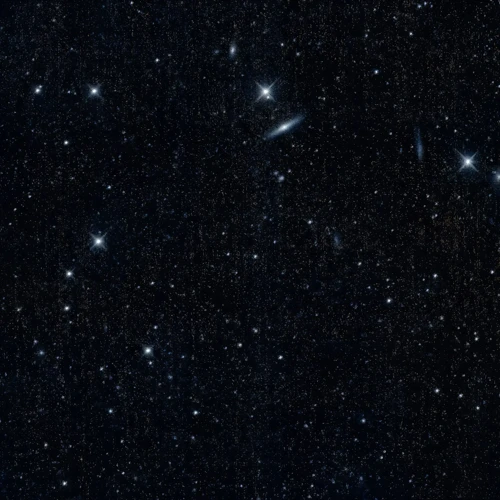
Cygnus, the Northern Cross, holds within its celestial embrace a myriad of cosmic mysteries waiting to be unraveled. One such enigma revolves around the connection between Cygnus and dark matter. Dark matter, an elusive substance that comprises a significant portion of the universe, has perplexed scientists for decades. Recent studies have shown that the Cygnus constellation might be a hotbed for dark matter activity, prompting further investigation. The gravitational interactions within Cygnus suggest the presence of vast amounts of this mysterious substance, adding to the intrigue surrounding the constellation.
Another captivating aspect of the Cygnus enigma lies in its potential association with black holes. Black holes, the gravitational powerhouses with a voracious appetite for matter, have fascinated scientists and the public alike. Cygnus X-1, the first black hole ever discovered, resides within the Cygnus constellation. This celestial behemoth, formed from the remnants of an exploded star, emits powerful X-rays that have been extensively studied. The discovery of black holes, particularly within the Cygnus constellation, has opened up new avenues of research and deepened our understanding of these cosmic phenomena.
As we delve deeper into the cosmic mysteries of Cygnus, new questions arise and our thirst for knowledge intensifies. What role does Cygnus play in the cosmic web of dark matter? How do black holes within the constellation shape the fabric of our universe? The answers to these puzzling questions lie within the realm of ongoing research and exploration. As scientists continue to unravel the Cygnus enigma, a clearer picture of the universe’s intricate tapestry emerges, bringing us closer to understanding the awe-inspiring wonders that lie beyond our reach. The exploration of the Cygnus constellation, with its connection to dark matter and black holes, serves as a reminder of the vastness and complexity of the cosmos that stretches far beyond our earthly confines. Cygnus stands as a testament to the ongoing quest for knowledge and the everlasting fascination with the mysteries of the universe.
5.1 Dark Matter and Cygnus
The Cygnus constellation has also intrigued scientists due to its potential connection to dark matter. Dark matter is a mysterious substance that doesn’t interact with light or any other form of electromagnetic radiation, making it invisible to traditional detection methods. Scientists hypothesize that dark matter makes up a significant portion of the universe’s mass, yet its composition and precise nature remain elusive. In recent years, researchers have discovered that there is an unusually high concentration of dark matter within the Cygnus constellation. This finding has sparked further investigations and raised intriguing questions about the role of Cygnus in the study of dark matter. Scientists theorize that the gravitational pull of the dark matter in Cygnus may have influenced the formation and distribution of stars within the constellation. Understanding the relationship between dark matter and the cygnus constellation may provide valuable insights into the nature of dark matter, its role in galaxy formation, and the overall structure of the universe. Researchers continue to study this cosmic enigma, pushing the boundaries of our understanding of the universe and its hidden mysteries. Gemini-Sagittarius Rising compatibility.
5.2 Black Holes and Cygnus
Black holes, the enigmatic cosmic entities that possess such immense gravitational pull that nothing can escape their grasp, have a profound connection to the Cygnus constellation. Within the constellation lies Cygnus X-1, a binary star system that harbors one of the most well-studied black holes known to humanity. Discovered in the early 1970s, this binary system consists of a massive star and an invisible companion, which scientists believe to be a black hole. By studying the orbit of the companion star and its interaction with the massive star, astronomers have been able to infer the presence of the black hole. Cygnus X-1’s black hole is estimated to have a mass around 15 times that of our sun, making it a classical example of a stellar-mass black hole. The discovery of this black hole within the Cygnus constellation has provided invaluable insights into the nature and behavior of these mysterious cosmic entities. It has allowed scientists to study the phenomena of accretion disks, where matter from the companion star spirals towards the black hole, releasing vast amounts of energy in the process. Additionally, Cygnus X-1 has served as a benchmark for observational studies and theoretical models, aiding in our understanding of the formation, evolution, and physics of black holes. The black hole in the Cygnus constellation represents a cosmic marvel that continues to captivate astronomers, uncovering the secrets of the universe and shedding light on the profound mysteries hidden within the depths of space.
Conclusion

In conclusion, the Cygnus constellation, with its mesmerizing beauty and intriguing connections, continues to captivate our imagination and spark curiosity. Its formation and mythological significance have made it a celestial marvel that has stood the test of time. The Northern Cross, a stellar configuration within Cygnus, serves as a guidepost in both ancient navigation and modern astronomical research. Its alignment with ancient sites hints at a possible cosmic connection that transcends time and culture. The discovery of exoplanets within the Cygnus constellation expands our understanding of the vastness and diversity of the universe. Furthermore, Cygnus has become a subject of interest in studying dark matter and black holes, unraveling mysteries that lie within its domain. As we gaze at the Northern Cross, we are reminded of the beauty and complexity of our cosmos, urging us to continue exploring and unlocking the secrets of the universe. The Cygnus constellation invites us to ponder the wonders of our existence and the limitless possibilities that await us beyond the stars.
Frequently Asked Questions

1. What is the best time to observe the Cygnus constellation?
The Cygnus constellation is visible during the summer months in the northern hemisphere. The optimal viewing time is during the late evening and early morning hours.
2. How many stars are there in the Cygnus constellation?
The Cygnus constellation is home to numerous stars, with around 86 stars visible to the naked eye. Deneb, the brightest star in Cygnus, shines prominently in the night sky.
3. Are there any famous deep-sky objects within the Cygnus constellation?
Absolutely! Cygnus is a treasure trove of deep-sky objects. Some notable ones include the North America Nebula, the Pelican Nebula, and the Veil Nebula, all of which offer breathtaking views for astronomers and stargazers.
4. How far is the Cygnus constellation from Earth?
The Cygnus constellation is located at a distance of approximately 1,470 light-years from Earth. This vast expanse makes it one of the most distant constellations visible to the naked eye.
5. Is there any connection between Cygnus and the mythological story of Orpheus?
Indeed, there is a connection between Cygnus and the legendary musician, Orpheus. According to myth, after Orpheus was killed by the Maenads, the gods placed him in the sky as a constellation, and he was represented as Cygnus, the Swan.
6. What is the significance of Deneb, the brightest star in Cygnus?
Deneb, also known as Alpha Cygni, holds great astronomical importance. Its luminosity ranks it among the top twenty stars visible from Earth, making it a crucial reference point for astronomers studying distance measurement techniques.
7. Are there any known exoplanets within the Cygnus constellation?
Yes, there have been several exoplanets discovered in the Cygnus constellation. Astronomers have identified systems with multiple exoplanets, including the Kepler-186 system, which harbors five planets, with one potentially in the habitable zone.
8. Does the Cygnus constellation play a role in any ancient cultures or mythologies?
Absolutely! The Cygnus constellation holds significance in various ancient cultures, including Greek and Native American mythology. It features prominently in stories of gods, heroes, and important cosmic events throughout history.
9. Can the Cygnus constellation be observed from both the Northern and Southern Hemispheres?
Cygnus is primarily visible from the Northern Hemisphere due to its location in the northern sky. However, parts of the constellation can be seen from the Southern Hemisphere during certain times of the year, albeit low on the horizon.
10. Are there any upcoming missions or projects focused on studying the Cygnus constellation?
Yes, there are several ongoing and upcoming missions dedicated to studying the Cygnus constellation. These include space telescopes, ground-based observatories, and missions aimed at searching for habitable exoplanets within this stellar region.
References
- How to Find the Northern Cross Asterism in Cygnus the Swan
- Cygnus constellation: Facts about the swan
- Cygnus Constellation (the Swan): Stars, Myth, Facts, Location
Frequently Asked Questions

FAQs about the Cygnus Constellation
Curious about the Cygnus Constellation? Here are some frequently asked questions about this celestial wonder:
1. What is the significance of the Northern Cross?
The Northern Cross is a distinctive stellar configuration formed by the stars in the Cygnus Constellation. It has captivated astronomers and stargazers for centuries, symbolizing beauty and inspiration.
2. How was the Cygnus Constellation formed?
The Cygnus Constellation was formed through the random distribution of stars within our galaxy, creating patterns that we identify and study as constellations.
3. What is the mythological significance of Cygnus?
Cygnus has deep roots in mythology. In Greek mythology, it is believed to represent Zeus disguised as a swan. In other cultures, it symbolizes different birds and carries symbolic meanings like transformation and grace.
4. How did ancient civilizations recognize the alignment of Cygnus with their structures?
Ancient civilizations discovered the alignment of Cygnus with their structures through careful observation of celestial movements over generations. They recognized patterns and incorporated them into their architectural designs and sacred sites.
While some speculate that the Cygnus Constellation may contain hidden cosmic messages, there is no scientific evidence to support this claim. However, the allure of uncovering such messages continues to captivate the human imagination.
6. How do astronomers discover exoplanets in the Cygnus Constellation?
Astronomers discover exoplanets in the Cygnus Constellation using various techniques, such as the transit method and radial velocity method. These methods allow them to detect subtle changes in star brightness or wobble caused by the presence of orbiting planets.
7. How significant is the discovery of exoplanets in Cygnus?
The discovery of exoplanets in Cygnus is of great significance for exoplanetary research. It provides valuable data and insights into the prevalence and diversity of planets in our galaxy, expanding our understanding of the potential for extraterrestrial life.
8. What role does Cygnus play in the study of dark matter?
Cygnus plays a crucial role in the study of dark matter. Scientists use observations of this constellation to investigate the distribution and nature of dark matter, helping unravel the mysteries surrounding this elusive substance.
The Cygnus Constellation has several known black holes within its boundaries. These black holes, formed from the remnants of massive stars, present exciting opportunities for studying the physics and effects of these cosmic phenomena.
10. What can we conclude about the Cygnus Constellation?
The Cygnus Constellation is an object of both scientific and cultural fascination. Its formation, alignment with ancient sites, and potential cosmic mysteries make it an intriguing subject for further exploration and observation.
References
- Northern Cross: Stars, Constellation, Facts, Myth
- Cygnus Constellation (the Swan): Stars, Myth, Facts, Location







